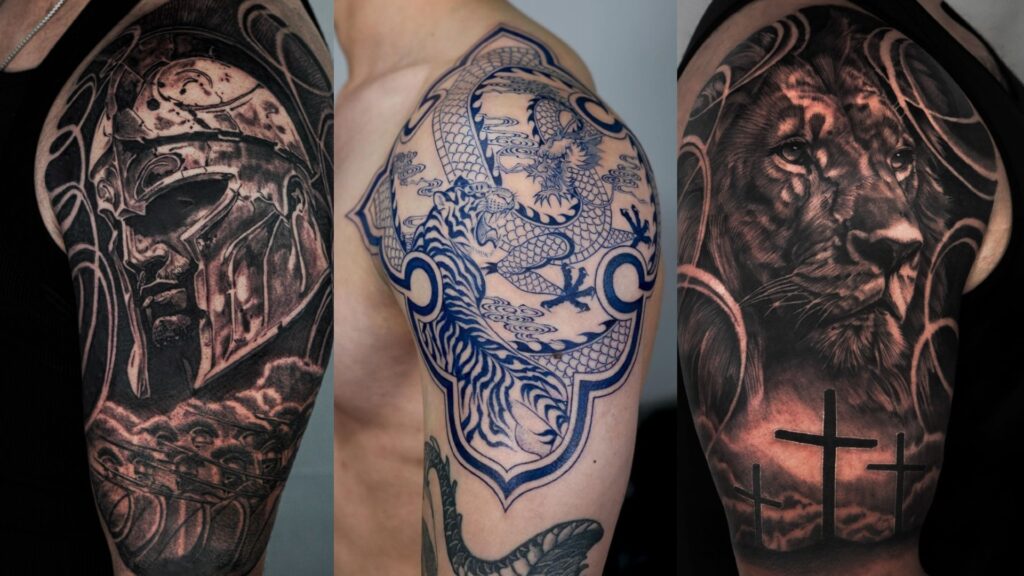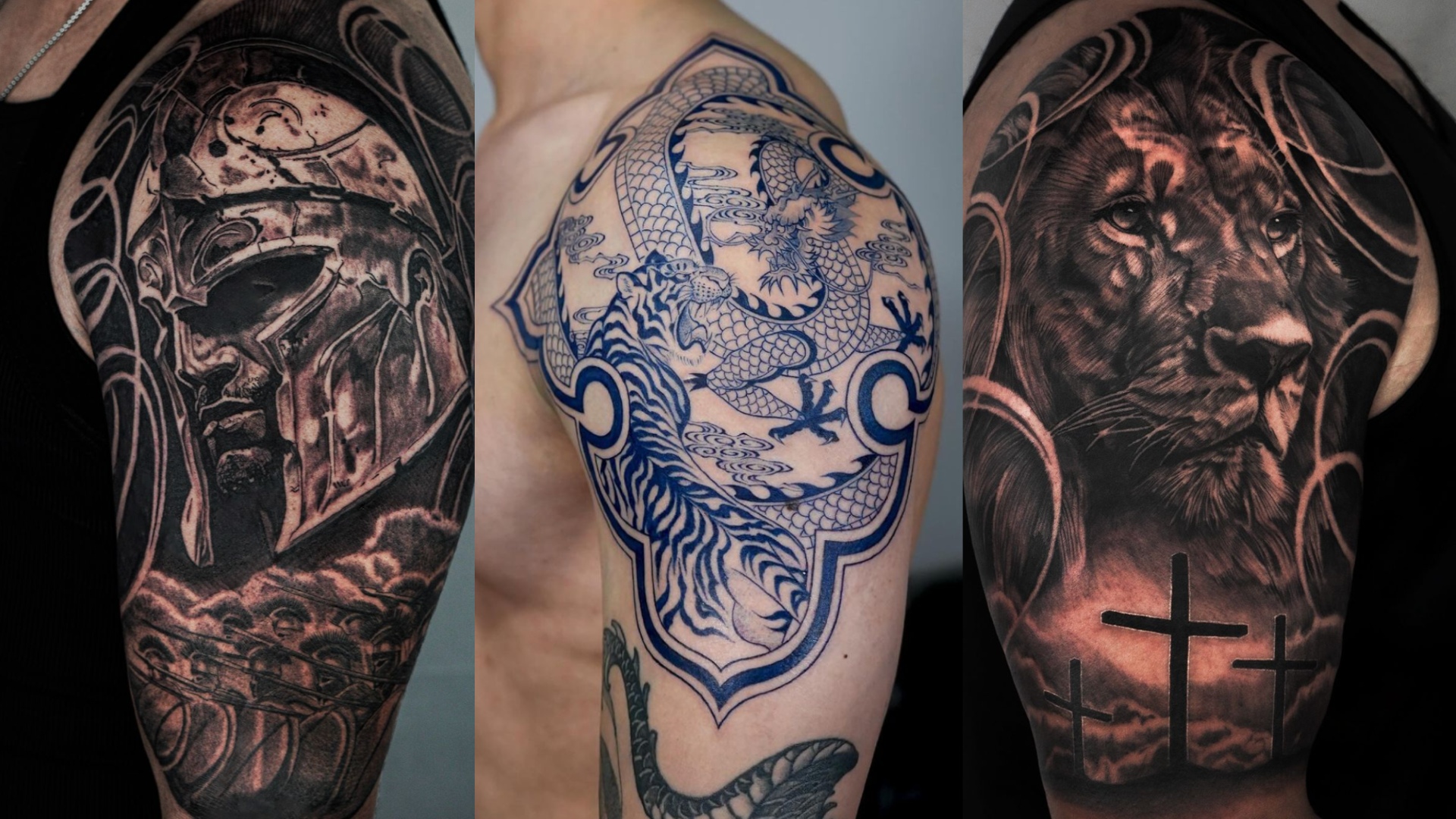
Redskin Tattoo Ideas: Exploring Designs, Meanings, and Cultural Considerations
Navigating the world of tattoo art can be a deeply personal journey, filled with choices that reflect identity, heritage, and values. If you’re exploring “redskin tattoo ideas,” it’s crucial to approach the topic with sensitivity and respect. This comprehensive guide delves into the various design possibilities, historical contexts, and, most importantly, the cultural implications of using this term in tattoo art. Our goal is to provide you with the information needed to make informed decisions that honor the complexities of Native American history and culture while expressing your individual artistic vision. We aim to provide a balanced perspective, acknowledging the potential harm and offense the term ‘redskin’ can cause while exploring the artistic expressions some may seek. This guide offers a nuanced approach, ensuring you’re equipped with the knowledge necessary to create a meaningful and respectful piece of art.
Understanding the Term ‘Redskin’ and Its Implications
The term “redskin” is a derogatory and offensive slur historically used against Native Americans. Its origins are rooted in the violent colonization and dehumanization of Indigenous peoples. Using this term, even in the context of tattoo art, can perpetuate harmful stereotypes and inflict pain on Native American communities. It is crucial to understand this history before considering any designs associated with the term. We strongly advise considering alternative phrases and imagery that are respectful and culturally appropriate.
Historical Context
The term emerged during periods of conflict and oppression, often used to justify violence and land theft against Native Americans. Its use was widespread in government policies, media, and popular culture, contributing to a narrative that marginalized and dehumanized Indigenous peoples. Understanding this historical context is essential for recognizing the harm the term continues to inflict.
Modern-Day Impact
Even today, the term “redskin” evokes pain and anger among Native Americans. Its continued use, whether intentional or unintentional, reinforces harmful stereotypes and perpetuates a legacy of discrimination. Many Native American organizations and activists have long campaigned against the use of this term in any context, advocating for respect and recognition of their cultural heritage.
Exploring Alternative Tattoo Concepts and Imagery
Instead of using the term “redskin,” consider exploring tattoo designs that celebrate Native American cultures in a respectful and authentic way. Here are some alternative concepts and imagery that can honor Indigenous heritage without perpetuating harmful stereotypes:
Tribal Art and Symbols
Many Native American tribes have distinct artistic traditions and symbols that hold deep cultural significance. Researching and understanding the meanings behind these symbols is crucial before incorporating them into your tattoo. Ensure you have permission or proper understanding before using any tribal-specific imagery. Consulting with tribal members or cultural experts is highly recommended.
Animal Representations
Animals often play a significant role in Native American mythology and spirituality. Consider incorporating animals like eagles, wolves, bears, or buffalo into your tattoo design, each representing different qualities and attributes. Again, research the specific cultural significance of these animals within different tribes to ensure respectful representation.
Nature-Inspired Designs
Nature is deeply connected to Native American cultures, with many tribes holding a profound respect for the land and its resources. Consider tattoo designs that incorporate elements of nature, such as mountains, rivers, forests, or constellations. These designs can symbolize harmony, balance, and connection to the natural world.
Portraits of Historical Figures
If you wish to honor specific individuals, consider portraits of notable Native American leaders, warriors, or artists who have made significant contributions to their communities and to history. Ensure you research their stories and accomplishments to accurately represent their legacy.
Working with Native American Artists and Cultural Experts
If you are genuinely interested in creating a tattoo that reflects Native American culture, consider working directly with Native American artists or cultural experts. They can provide invaluable guidance on appropriate imagery, symbolism, and cultural context. This collaboration can ensure that your tattoo is both beautiful and respectful.
Finding Native American Artists
Seek out Native American tattoo artists who specialize in traditional or contemporary Indigenous art. Many tribes have their own unique artistic styles, so finding an artist who is familiar with your specific cultural interests can be beneficial. Online directories and Native American cultural centers can be helpful resources for finding qualified artists.
Consulting with Cultural Experts
Even if you work with a non-Native artist, consulting with a Native American cultural expert can provide valuable insights into the cultural significance of your chosen design. They can help you avoid unintentional misrepresentations or cultural appropriation. Many tribal organizations and cultural centers offer consultation services.
Ethical Considerations and Cultural Appropriation
Cultural appropriation is the adoption or use of elements of a culture by members of another culture. In the context of tattoos, it is essential to consider whether your chosen design is appropriating Native American culture in a way that is disrespectful or harmful. Here are some ethical considerations to keep in mind:
Respect for Cultural Significance
Understand the meaning and significance of any symbols or imagery you choose to incorporate into your tattoo. Avoid using sacred or ceremonial symbols without proper understanding and respect.
Avoiding Stereotypes
Be mindful of perpetuating harmful stereotypes about Native Americans. Avoid designs that depict outdated or inaccurate representations of Indigenous peoples.
Giving Credit Where It’s Due
Acknowledge the cultural origins of your tattoo design. Credit the tribe or culture from which the imagery is derived. This demonstrates respect and awareness of the cultural context.
Examples of Respectful Native American-Inspired Tattoos
Here are some examples of tattoo designs that respectfully honor Native American cultures:
A Totem Pole Design
A totem pole can represent family lineage, cultural stories, and spiritual beliefs. Ensure you research the specific meanings of the symbols used in the totem pole to create a respectful and accurate representation.
A Feather Design with Tribal Patterns
Feathers are often seen as symbols of honor, strength, and freedom in Native American cultures. Incorporating tribal patterns into a feather design can create a beautiful and meaningful tattoo. Be mindful of the specific tribal patterns you choose and their associated meanings.
A Landscape Scene Depicting Native American Land
A landscape scene can depict the beauty and sacredness of Native American land. Choose a location that holds cultural significance and research its history and importance to the local tribes.
The Importance of Education and Awareness
Ultimately, creating a respectful and meaningful tattoo inspired by Native American culture requires education, awareness, and a genuine desire to honor Indigenous heritage. Take the time to learn about the history, cultures, and traditions of Native American tribes. Engage with Native American communities and listen to their voices. By doing so, you can create a tattoo that is both beautiful and respectful.
Resources for Learning About Native American Cultures
* **Native American Cultural Centers:** Visit local or online cultural centers to learn about Native American history, art, and traditions.
* **Tribal Websites:** Explore the websites of different Native American tribes to learn about their specific cultures and perspectives.
* **Books and Articles:** Read books and articles written by Native American authors and scholars to gain a deeper understanding of Indigenous issues.
* **Museums and Exhibits:** Visit museums and exhibits that showcase Native American art and history.
Legal Considerations and Rights Regarding Tribal Art
When incorporating tribal art into tattoos, it’s crucial to understand the legal considerations surrounding intellectual property and cultural rights. Many tribes have specific laws and protocols regarding the use of their traditional designs and symbols. It’s essential to respect these rights and seek permission when necessary.
Intellectual Property Rights
Native American tribes have the right to protect their cultural heritage, including their traditional art and designs. Using tribal art without permission can infringe on their intellectual property rights.
Cultural Protocols
Some tribes have specific protocols regarding the use of sacred or ceremonial symbols. It’s essential to respect these protocols and avoid using such symbols without proper authorization.
The Future of Native American Representation in Tattoo Art
The future of Native American representation in tattoo art depends on fostering greater understanding, respect, and collaboration between artists and Indigenous communities. By prioritizing cultural sensitivity, ethical considerations, and authentic representation, we can create a more inclusive and respectful landscape for tattoo art.
Promoting Collaboration and Dialogue
Encouraging collaboration and dialogue between tattoo artists and Native American communities can lead to more meaningful and respectful representations of Indigenous culture. This can involve workshops, consultations, and mentorship programs.
Raising Awareness and Education
Raising awareness and education about Native American history, culture, and contemporary issues is crucial for promoting cultural sensitivity in tattoo art. This can involve educational campaigns, online resources, and community outreach programs.
Q&A: Addressing Common Questions About Native American-Inspired Tattoos
Here are some common questions and answers to help you navigate the complexities of Native American-inspired tattoos:
Q1: Is it appropriate for a non-Native person to get a Native American-inspired tattoo?
A1: It can be appropriate if done with respect, understanding, and cultural sensitivity. Research the meaning of the design, avoid stereotypes, and consider working with a Native American artist or cultural expert.
Q2: How can I ensure my tattoo is not culturally appropriative?
A2: Educate yourself about Native American cultures, avoid using sacred or ceremonial symbols without permission, and give credit to the cultural origins of your design.
Q3: What are some respectful ways to honor Native American heritage through tattoos?
A3: Consider using tribal art, animal representations, nature-inspired designs, or portraits of historical figures. Research the specific cultural significance of these elements to ensure respectful representation.
Q4: Where can I find Native American tattoo artists?
A4: Search online directories, contact Native American cultural centers, or ask for recommendations from Indigenous communities.
Q5: How can I learn more about Native American cultures?
A5: Visit Native American cultural centers, explore tribal websites, read books and articles by Native American authors, and visit museums and exhibits that showcase Native American art and history.
Q6: What should I do if I am unsure about the cultural significance of a tattoo design?
A6: Consult with a Native American cultural expert or tribal representative to get their insights and guidance.
Q7: Are there any tattoo designs that are always off-limits for non-Native people?
A7: Sacred or ceremonial symbols should generally be avoided unless you have explicit permission from the tribe or culture to use them.
Q8: How can I support Native American artists and communities through my tattoo choices?
A8: Hire Native American artists, purchase art from Native American-owned businesses, and donate to Native American cultural organizations.
Q9: What are the potential consequences of getting a culturally appropriative tattoo?
A9: You may face criticism from Native American communities and others who are sensitive to cultural appropriation. You may also contribute to the perpetuation of harmful stereotypes and the erasure of Indigenous cultures.
Q10: How can I educate others about cultural sensitivity in tattoo art?
A10: Share your knowledge and experiences with others, encourage them to research Native American cultures, and advocate for respectful representation in tattoo art.
Conclusion: Embracing Respect and Understanding in Tattoo Art
Creating a tattoo inspired by Native American culture can be a deeply meaningful and rewarding experience. However, it is essential to approach this topic with respect, understanding, and cultural sensitivity. By educating yourself about Native American history, cultures, and traditions, working with Native American artists and cultural experts, and avoiding cultural appropriation, you can create a tattoo that honors Indigenous heritage in a respectful and authentic way. Remember that the goal is to celebrate and appreciate Native American cultures, not to exploit or misrepresent them. Engage with Native American communities, listen to their voices, and strive to create a tattoo that reflects your genuine respect and admiration for their rich and diverse heritage. Explore our other articles on respectful tattoo practices and cultural appreciation to continue your journey towards informed and ethical tattoo choices. Share your thoughts and experiences with culturally sensitive tattoo designs in the comments below!

